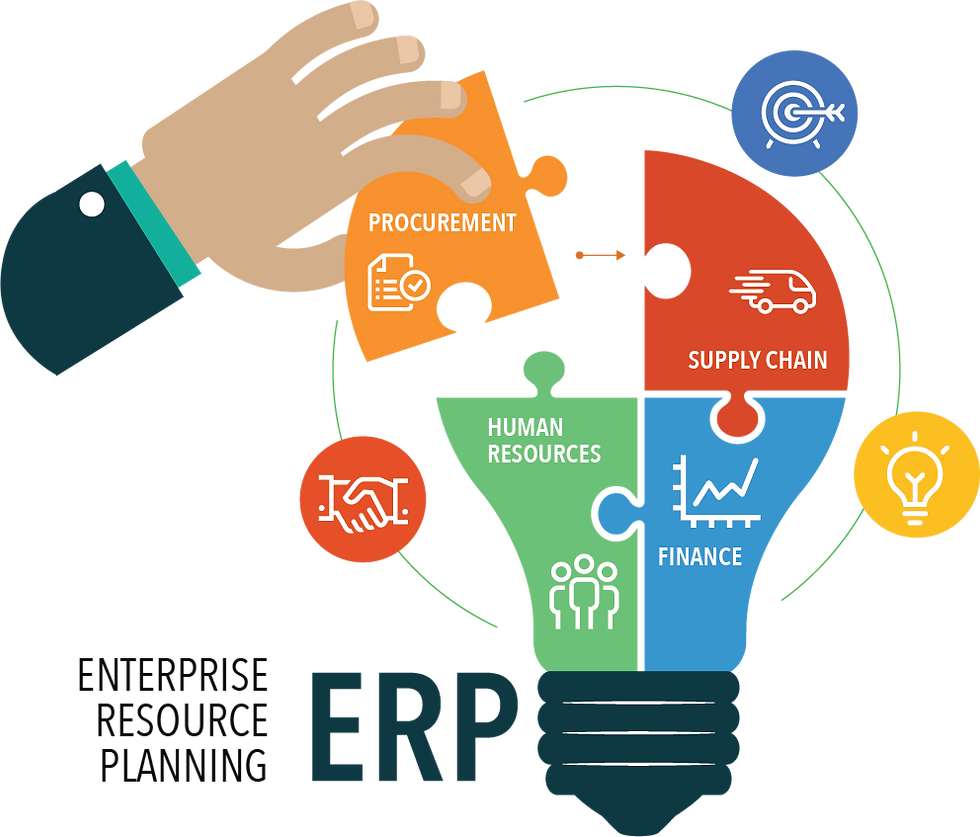Enhancing Education Management: The Role of ERP Solutions in Educational Institutions
- solutionscakiweb
- Nov 24, 2023
- 3 min read
In today's rapidly evolving educational landscape, the need for efficient and streamlined administrative processes is more pronounced than ever before. Educational institutions, ranging from schools to universities, face multifaceted challenges in managing their resources, data, and operations effectively. To address these complexities, many institutions are turning to Enterprise Resource Planning (ERP) solutions tailored specifically for the education sector. These ERP systems offer a comprehensive suite of tools and functionalities to optimize various administrative tasks, improve decision-making, and elevate the overall educational experience.
Understanding ERP Solutions for Educational Institutions
1. Streamlining Administrative Operations:
ERP solutions integrate various administrative functions such as admissions, enrollment, fee management, human resources, finance, and academic planning. By centralizing these processes into a single platform, educational institutions can eliminate redundancy, reduce manual errors, and enhance overall operational efficiency.
2. Enhanced Student Management:
ERP systems offer modules for student information management, allowing institutions to efficiently track student data, academic performance, attendance, and conduct. This centralized database facilitates better communication between faculty, students, and parents, enabling personalized interventions and support where needed.
3. Financial Management and Budgeting:
Managing finances in educational institutions involves complex tasks such as budgeting, accounting, procurement, and expense tracking. ERP solutions provide robust financial management modules that automate these processes, ensuring transparency, compliance, and better financial planning.
4. Human Resource Management:
From faculty recruitment to payroll management, ERP systems simplify HR processes. They assist in managing staff information, performance evaluations, training programs, and regulatory compliance, fostering a more efficient and engaged workforce.
5. Analytics and Reporting:
erp solutions for educational institutions offer powerful analytics tools that enable institutions to generate insightful reports and analytics. These reports help in making data-driven decisions, identifying trends, and forecasting future needs, thereby aiding strategic planning.

Benefits of ERP Solutions in Educational Institutions
1. Improved Efficiency and Productivity:
By automating repetitive tasks and streamlining workflows, ERP systems significantly enhance productivity among administrative staff, allowing them to focus more on strategic initiatives rather than manual processes.
2. Enhanced Communication and Collaboration:
Centralized data access enables seamless communication between various departments, faculty, students, and parents. This fosters collaboration, reduces communication gaps, and ensures everyone stays informed.
3. Data Security and Compliance:
ERP solutions prioritize data security, ensuring that sensitive student and institutional information remains protected. They also aid in regulatory compliance, adhering to standards and regulations set by educational authorities.
4. Facilitates Informed Decision-Making:
With real-time access to comprehensive data and analytics, decision-makers can make informed choices regarding resource allocation, curriculum enhancements, student support, and infrastructure development.
5. Scalability and Adaptability:
ERP systems are designed to scale as institutions grow, ensuring that the software remains adaptable to changing needs and technological advancements.
Implementing ERP Solutions: Challenges and Best Practices
Challenges:
Resistance to Change: Introducing new systems can face resistance from staff accustomed to traditional methods.
Integration Complexity: Integrating ERP solutions with existing systems can be complex and time-consuming.
Cost and Resource Allocation: Initial investment and resource allocation for ERP implementation can be a challenge for some institutions.
Best Practices:
Stakeholder Involvement: Involving all stakeholders from the beginning fosters buy-in and smooth adoption.
Comprehensive Training: Providing extensive training to staff ensures effective utilization of the ERP system.
Phased Implementation: Rolling out ERP solutions in phases minimizes disruption and allows for smoother integration.
Regular Evaluation and Upgradation: Continuous evaluation and upgrading ensure the ERP system remains aligned with evolving needs.
Conclusion
ERP solutions have become indispensable for educational institutions aiming to enhance their administrative efficiency, student engagement, and overall performance. By leveraging these systems, institutions can streamline operations, improve decision-making, and deliver a more enriching educational experience for students, faculty, and administrative staff alike. Embracing technological advancements like ERP solutions is pivotal in shaping the future of education management and ensuring institutions stay competitive in an ever-evolving landscape.



Comments